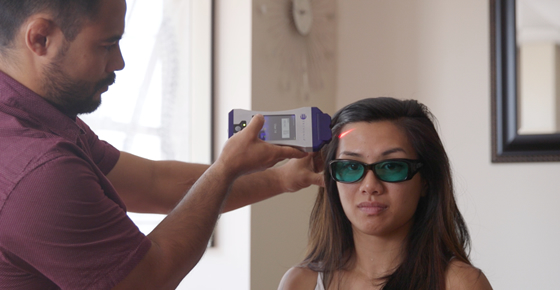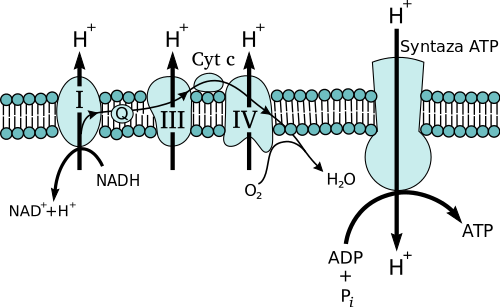
Low level light therapy (LLLT) or photobiomodulation is a therapeutic strategy that has been recently growing in popularity due to the advancement in technology and decrease in cost of production. It looks like one of those barcode scanner that cashiers are using at the groceries, don’t feel like anything when applied to the body, but yet can produce some of the most incredible healing results.
A little bit of history
Light therapy has been used for centuries by many ancient civilizations who noticed that exposure to the sunlight would help with many health issues such as mood disorders, fatigue, or neonatal jaundice. In 1025 a Persian physician named Ibn Sina went further and published an encyclopedia of medicine where he described that by using tinted glasses, different color of light would have different healing properties. For example, he said that red light would stimulate circulation of the blood, whereas blue light would reduce inflammation. Nobody knew it at that time, but light is actually a bunch of particles called photons that spread through the air at a certain wavelength. The value of that wavelength will determine what color those particles will look like for us. Therefore, by manipulating that source of light the proper way, people learned how to make it spread at any specific wavelength, and hence give to light any specific color we wanted.
Later on in the 19th century, a Scottish physicist named James Maxwell (rightly) hypothesized that light is only a tiny part of a spectrum of a form of energy called electromagnetism.

Influence of light on the human body
As mentioned earlier, light is nothing but a source of wave of energy emitted at a specific frequency. And like any other type of energy, it has effects on the human body. For instance, heat, which is another type of energy, will cause or body temperature to rise, our blood vessels to dilate, and our sweat glands to secrete sweat. Light has three different biological effect on the body:
1. Visual optic pathway
This one is the most obvious. Light gets through your eyes that have light receptors called cones and rods (due to their respective shapes) located in the retina, which will convert that signal into a neurological signal through optic fibers that will end to the visual cortex, located at in the occipital lobe at the back of the head. By the way, promising new advancement in research is now finding a way to stimulate that visual cortex via another pathway than the optic fibers and hence are able to (partially) restore vision to blind people.
2. Non-visual optic pathway
Very recently, an American neuroscientist named Provencio (Provencio 2000) identified another type of receptor in the retina called melanopsin. Moreover, this melanopsin receptor first appeared in invertebrates and is hence, in an evolutionary perspective, older than the rods and cones. The melanopsin receptors send signal to an area of our brain called the suprachiasmatic nucleus (SCN), located in our hypothalamus. The hypothalamus is one of the most primal area of our brain that regulate vital functions such as hormones release, immune system activation, body temperature, hunger/thirst, and our internal clock, which is governed by the SCN. The internal clock, also called our circadian rhythm, aligns our biological pattern (sleeping and eating pattern, brain wave activity, hormones production, cell regeneration,…) with the sunlight and this explains why a blind person’s biological pattern remains relatively similar as someone who can see. Another part of the brain that has light receptor is the pineal gland. This gland is also called our 3rd eye and is thought to be used as an additional eye in the past before we lost it. Some amphibians and reptiles still have an external pineal gland, the pineal eye. In humans the function of the pineal gland is not completely well understood yet, but it seems to be connected with the release of melatonin hormone, which regulates our quality of sleep and is inversely correlated with cortisol, our major stress hormone.
3. Photobiomodulation pathway
This pathway is the most important one for our purpose and it involves the mitochondria, those powerhouses within each single cell of our body. The mitochondria, through a series of metabolic reaction called mitochondrial respiratory chain, generates adenosine triphosphate (ATP), which is the metabolic fuel that all of our cells use to perform their functions.

As described by the scientist Karu in the 90s, photon particles are capable to stimulate that cytochrome c oxidase enzyme resulting in an enhancement of the mitochondrial respiratory chain, thus increasing the ATP available for the cell. Moreover, photons seem to stimulate the regeneration of the DNA, or in other words, to stimulate the healing process of our cells. More recent research (Hashmi et al. 2010) showed that photobiomodulation activate nuclear factor-kB (NF-kB), key factor for our immune system regulation, and helps to regulate reactive oxygen species (ROS) and our oxidative stress system. Another study (Lohr 2009) showed that photobiomodulation increased blood flow through release of nitric oxide.
Those discoveries explained why so many benefits were observed using light therapy. Further research showed that the depth of penetration in the human body depends on the wavelength of the photons emission, reaching its maximum depth with infra-red and near infra-red wavelength spectrum (roughly between 600nm and 1200nm), deep enough to go through the skull and reach the brain.
